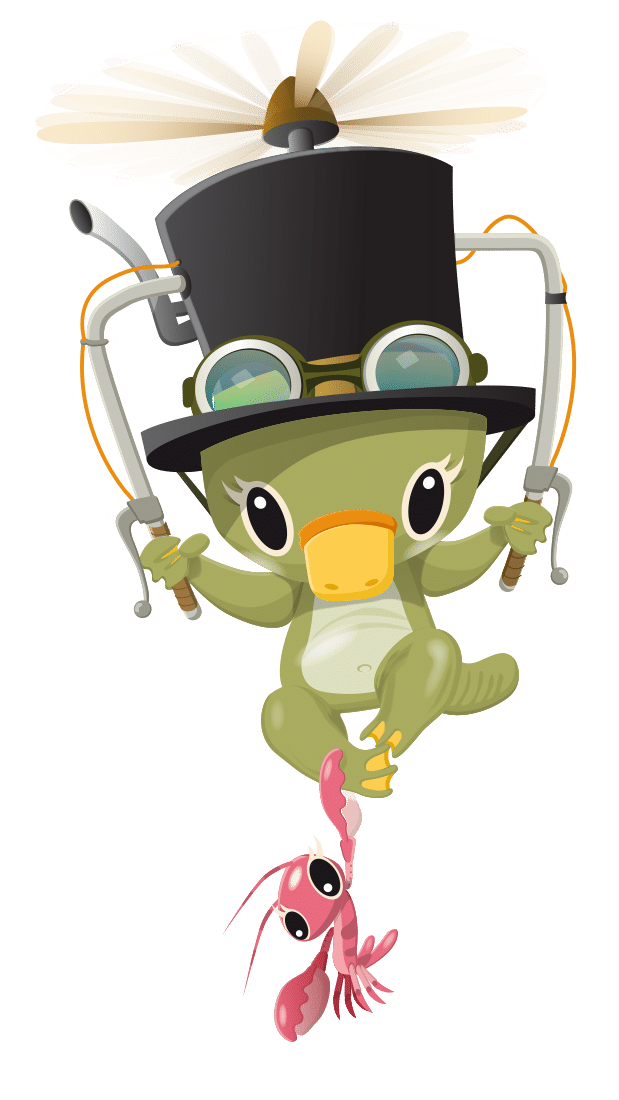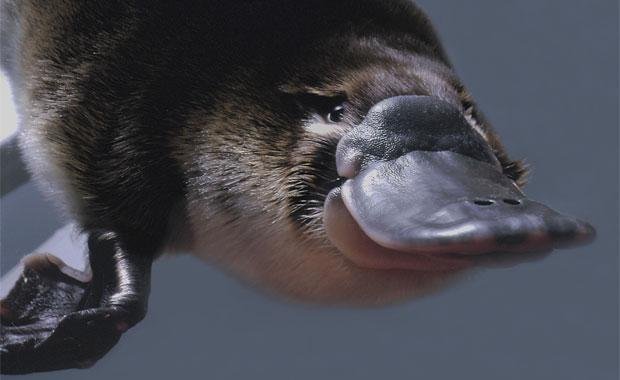

By a river, in a mill house, lives a platypus called Playpen.
Playpen likes to solve problems. He is an inventor. Sometimes his inventions are very useful and sometimes they are not so useful. They are always fantastic flights of fancy. Playpen doesn’t speak much, he is too busy thinking.
His favourite meal is worms
Playpen lives beside a river much like every platypus, but he has upgraded his humble burrow into a fully functioning mill house with a special space inside for inventing. This departure from normal platypus behaviour has caused all sorts of uproar from the broader platypus community who are by nature a conservative and quiet species not given to spectacle or change. Unfazed by this outrage he has precipitated, Playpen continues inventing things.
Playpen is aided in his industry by his good friend Gabbie. Gabbie is of course a yabbie. A small crustacean that lives in creeks and rivers and along with worms usually forms part of a platypus’s diet. This fact seems to have been forgotten by both Gabbie and Playpen who have a healthy friendship with a small smattering of co-dependency and no desire to devour each other. This strange alliance only adds to the offence taken by the general platypus population and is why Playpen rarely receives visits from other platypus.

Playpen Power Chart
Learn about the Platypus

The Platypus (Ornithorhynchus Anatinus)
An adult male platypus is around 500mm long and 1-2.2 kilograms in weight. The female is smaller at 450mm about 0.7-2 kilograms in weight. The duck- like bill is covered in bluish, leathery skin and the fur is a velvety dark brown velvety on the back and creamy yellow underneath The feet are webbed.
Habitat: When not fossicking in a stream or river, the platypus spends the rest of its time in a short, simple burrow in the side of the bank often under a tangle of tree roots. The entrance is about one to two metres above water level. It is usually distinguishable from other holes in the river banks by its characteristically oval section and it may be double-ended.
Diet: Much of the diet includes adult and larval invertebrates such as worms, yabbies, and insect larvae but it occasionally eats small vertebrates. The smaller prey are sifted from the mud, silt and gravel in the bottom of their habitats using electro-magnetic receptors in the bill.
Breeding: The female platypus makes a second burrow for nesting. It may be up to 20 metres long. When the female enters the burrow to lay her eggs she blocks the burrow every few metres to keep out floods and predators and to retain heat. The female lays 2-3 white eggs in a nest consisting of dry grass and leaves. The eggs hatch after two weeks. The young remain in the nest for four months emerging in December or January. At that time they are about 300mm long.
Learn more at: The Australian Reptile Park or Healesville Sanctuary



